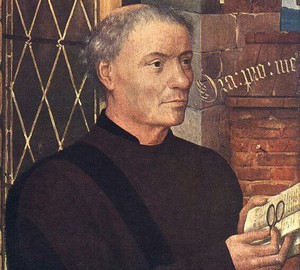
Description of the picture:
Benefactor with a birdcage – Matthias Grunewald. 1500.
Matthias Grunewald as a person, unfortunately, was lost for half a millennium from the date of his death. His paintings were attributed either to Albrecht Dürer, or to other less well-known contemporaries. Only in the 19th century did art rediscover the name of the brightest German painter of the Northern Renaissance, and research from the 2000s brought some specificity to his biography. Researchers bit by bit, according to the smallest fragments and testimonies began to “collect” the appearance and life path of the artist. Some clues provided us with paintings, of which there are not many.
In general, Grunewald turned to religious subjects, and a number of his portraits, executed in the technique of drawing, were also preserved. The Benefactor with the Birdcage is a rare, almost “secular” work of the master. Very little information has been preserved about the circumstances of the creation of the painting, so art historians call it exclusively by what is depicted on the canvas.
It is believed that the time of writing the painting is 1500. Sure, Grunewald painted a portrait, but it is not known who specifically made the customer. For black clothes with a characteristic standing collar, we can assume that we have before us a certain representative of the clergy. It is known for certain that the young archbishop Albrecht of Brandenburg ordered some work from Grunewald. But nothing tells the viewer that it is he. Therefore, the researchers of the work of Grunewald decided simply to christen him the “Benefactor.” In his hands he holds a miniature pince-nez and a book, most likely of spiritual content.
The second significant element of the composition is the bird cage located by the master in the upper right corner. Through the frequent edges of the grill you can see a bird. It is very likely that this is a songbird, which in Europe was considered the best bird “with a voice” (like our nightingale).
Grunewald chose a calm color scheme for the presented work. You can see that in his other works there are much more contrasting color combinations. The general colors were brown in all its shades and red. Color contrast creates a black cassock.
The style of the master’s writing is expressive and authentic. We can notice small neat strokes, filigree drawing of details (the face of the benefactor, hair, hands, brickwork of the wall, etc.).
Today, the painting is in the Museum of Fine Arts in Strasbourg."